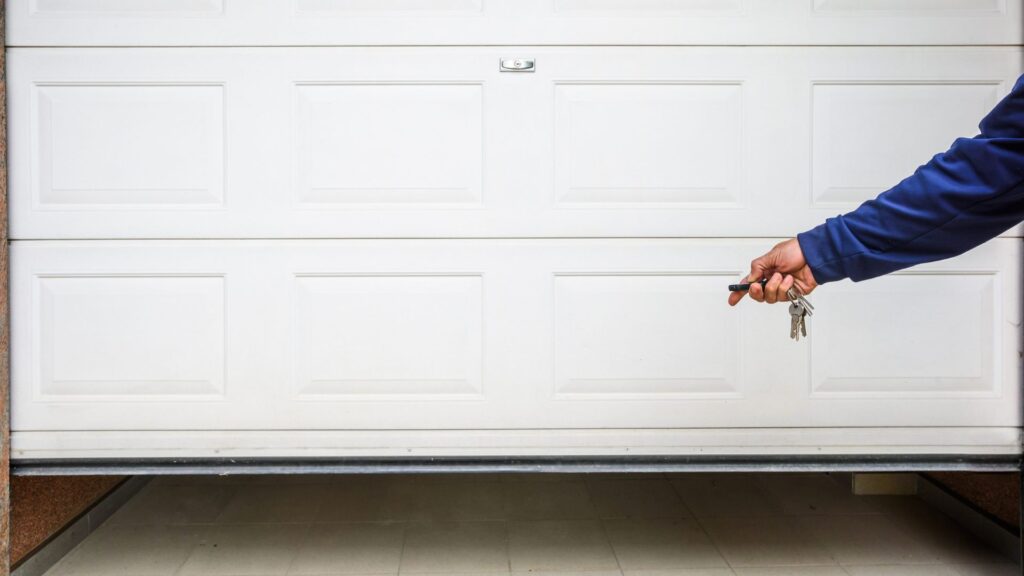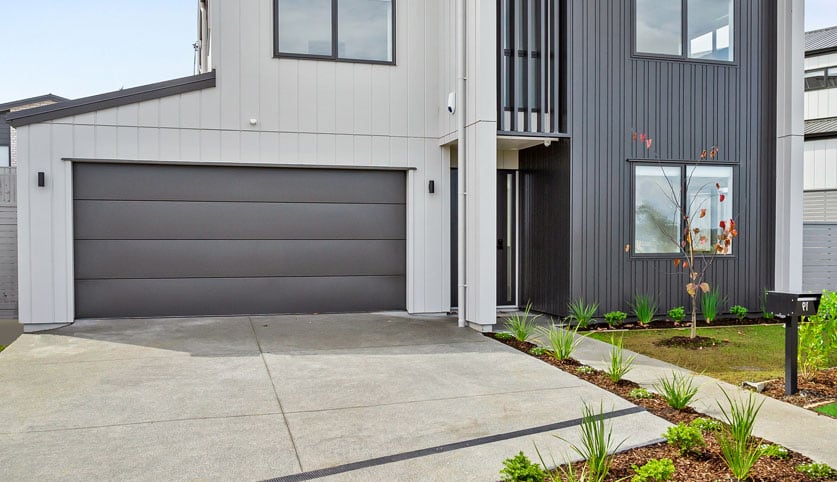
Your garage door is a crucial part of your home, and it deserves proper care. From noisy hardware to a faulty opener that leaves you stuck outside, even the very best garage doors can occasionally run into problems.
On top of annual professional inspections, conducting regular, ongoing maintenance is a simple way to prevent these types of issues from arising.
Keep reading for our expert advice on ensuring your Sectional Garage Door operates smoothly for many years to come and some garage door troubleshooting tips for the next time it refuses to work quite as it should.
Regular garage door maintenance helps prevent common problems that can turn into real headaches down the line, avoids potential breakdowns and extends the lifespan of your door. By following our essential maintenance tips for your Sectional Garage Door, you can reduce the likelihood of a noisy garage door and minimise wear and tear on its components.
Here's what you should be doing every few months to ensure smooth operation.
Before you begin, use your garage door opener to operate the door as you normally would. Watch as your garage door opens and closes to identify any potential problem areas. You should then turn off the mechanical system and manually lift the door open and shut.
Uneven movement may indicate the garage door is not properly aligned. Sectional Garage Doors also have a torsion spring system located above the door opening so damaged or broken springs can cause the door to become difficult to operate.
If you have any problems with your garage door springs, it's not properly aligned, or it's making excessive noise, it's best to call for professional assistance to prevent further damage, especially to your garage door motor.

At this stage, you should also check over the door panels to ensure no damage could lead to costly repairs further down the track.
By lubricating moving parts, unusual noises like grinding are less likely to occur. Use a silicone-based lubricant every six months on springs, hinges, rollers and any other components that move.
Keep an eye out for signs of rust or worn rollers that may need replacing. After lubricating, open and close the garage door to help distribute the lubricant evenly.
Loose hardware can lead to excessive wear and tear, so it's important to ensure you don't have any loose bolts that could cause the door to vibrate and potentially damage the tracks. Inspect all bolts and tighten anything loose with a socket wrench.
Weather seals greatly improve energy efficiency, so look for any sections that are brittle, damaged or no longer in contact with the door frame. You can also ensure it's weather-tight by looking for light coming from the garage at night or by hosing the bottom of the garage door and checking for leaks inside.
Routine maintenance on garage door tracks helps keep the door moving smoothly. However, you should never apply lubricant to the tracks, as it can attract dirt and grime. Instead, wipe the tracks with a damp cloth or use a small amount of methylated spirits. This should be done as regularly as necessary.
While you are wiping them, check that they are in good shape with no signs of bent tracks or rust.
Replace the batteries in your remote control regularly and wipe it and your wall switch to ensure they remain free of dust and grime.
A Sectional Garage Door that's not working correctly can malfunction if the problem isn't addressed promptly. Here are some common garage door issues and quick fixes you can try before calling in the professionals.
First, check your door opener. Change the batteries in your remote control and check that the lock on the wall switch hasn't been activated. Next, look into the power supply to the garage door opener, and if a circuit breaker has tripped, reset it.
If neither of these issues seems to be the problem, look for obstructions to the door's path. This includes misaligned tracks and photo sensors. If the door still won't move, it may be caused by broken springs and will require professional attention.
If your garage door receives regular upkeep and professional servicing but suddenly begins to make squeaking, grinding or rattling noises, the door may have become unbalanced. The springs and cables will need to be adjusted, and this job is one best left to the professionals.
A Sectional Garage Door that partially closes and reverses is normally due to problems with sensors or limit settings. Ensure sensors are clean, facing each other and not obstructed and reset them if need be.
You may also need to try adjusting the close limit by following the instructions in your user manual.
Many homeowners believe that garage doors don't require any maintenance, but this couldn't be further from the truth. With such a huge weight to lift and so many moving parts, regular maintenance not only helps your garage door run smoothly but also improves the longevity of your door.

At Windsor Doors, we manufacture premium-quality Sectional Garage Doors that are designed to last for many, many years. But even garage doors of the highest quality need TLC to keep them working their best. Visit our website to learn more about what makes our garage doors more durable than the rest.
The most common garage door problems repairs are broken springs, cables, door panels or tracks. Maintenance tasks like tightening loose nuts, using silicone-based lubricant on moving parts and cleaning the tracks will help prevent the need for these types of repairs.
The biggest disadvantages of Sectional Garage Doors are their initial cost and ceiling space requirements. However, they are extremely durable and provide energy efficiency and enhanced functionality compared to other garage door options.
A small amount of regular maintenance goes a long way. Inspect, clean, and lubricate your garage door to help keep it in top shape for longer.

